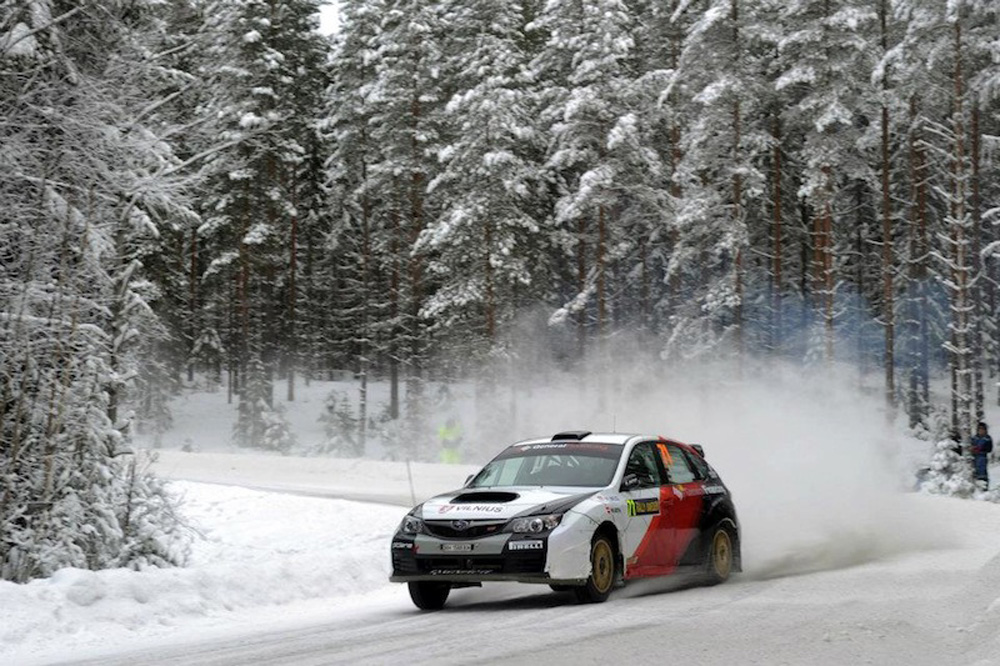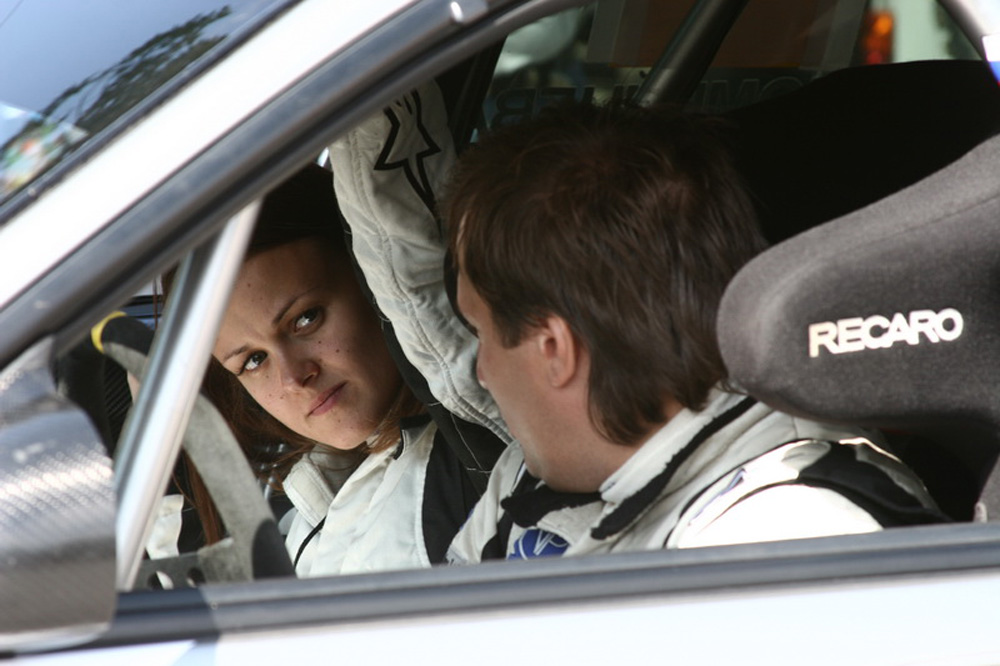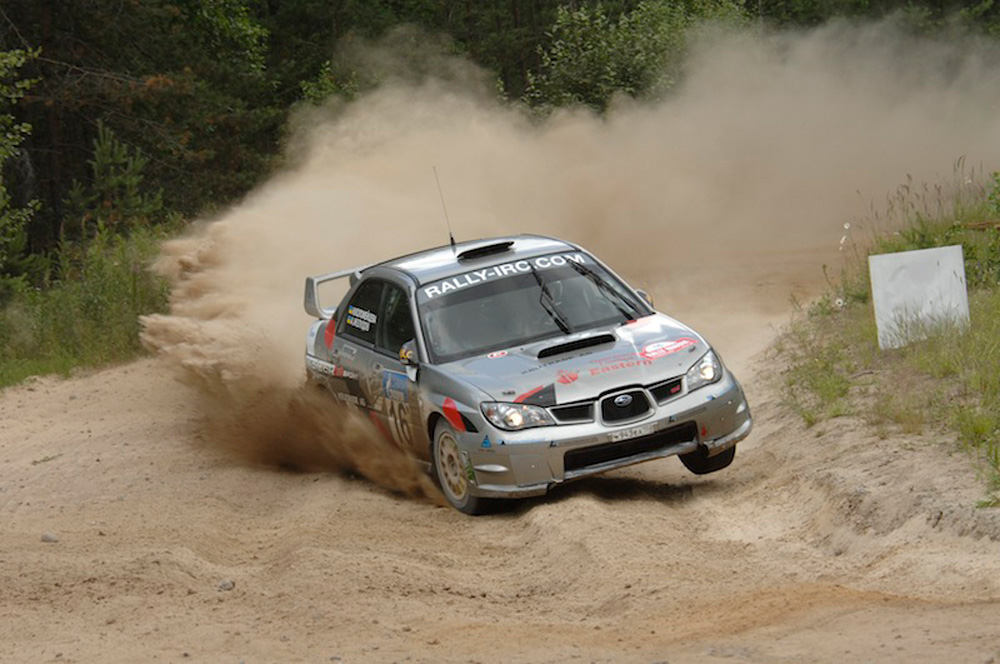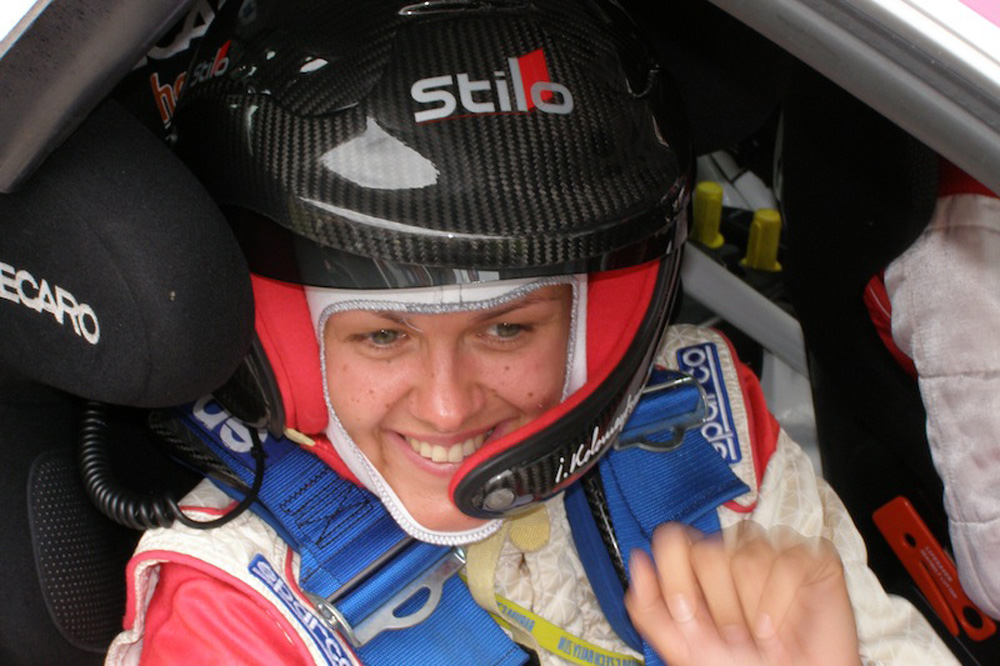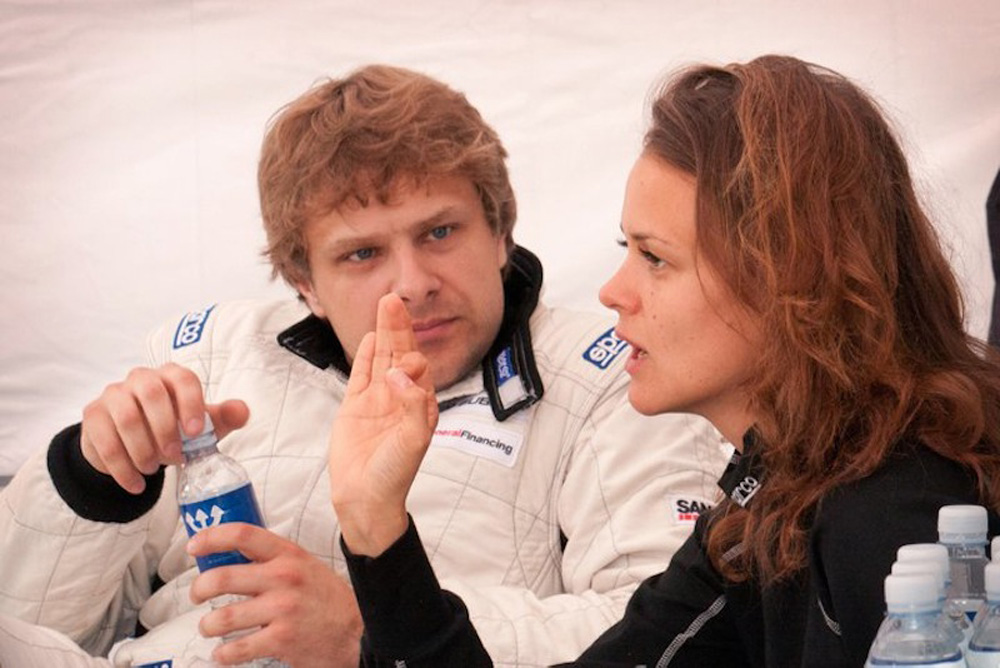Tsunami RT was started as a rally team, and we still feel tenderness for this discipline. The rally champion of Ukraine and Russia Irina Kolomeytseva tells us about the co-driver secrets.
Irina Kolomeytseva: "The main question asked by beginner co-drivers is what is the amount and the pace of presenting information. The problem of many drivers who change from front to four-wheel drive is as follows: it seems to them that if the car moves faster they have to speak faster. That is not true. The information given in a wrong pace is just not perceived by the driver. You have to speak a little bit in advance and play with the pace of speech very correctly. Anytime you begin to speak you should understand when you end the phrase.
A co-driver should understand which information remains in driver's head. For example, you read: "Left 2 – 500 – right 6". In the time you passed 500 meters, he has already forgotten about "right 6". That's why I say: "left 2 – 500" then remain silent for some time and say: "right 6".
My coach, a brilliant co-driver Aleksei Shchukin, has always been teaching me that it is not necessary to repeat because it can confuse the driver. However, I know the drivers who are bored when they are not talked to, they feel uncomfortable. Such a driver will play it safe: yes, we are together in this, we understand what we are doing. The repetition should be intonationally distinguished for the driver to understand.
It is also simpler for the co-driver to repeat: he or she can play it safe too in such a way. It is not always possible to make it on the four-wheel drive. If this is the case, we repeat the main turn and the information that follows it.
There are practices and tests to understand what the driver needs, and the driver himself should tell you that he needs it to be read this or that way.
There are roads with a bunch of turns, and all of them are rather fast. If we begin to repeat all of them, you will be confused yourselves – your eyes are down all the time, you do not drive through the track. That is why there are groups of turns. If you and the driver are not a well-coordinated team yet, don't hesitate to ask during familiarization, how it is preferred to hear the information of different types.
Anyway, every team of a driver and a co-driver has its most important turn where they can lose a lot of speed, not to speak of the possibility to run into a tree. If you don't understand which turn it is, you'd better ask. These turns should be intonationally distinguished.
It is ideal to write the pace notes in chains: one line – one chain. In this case I don't think that one sheet should correspond to one kilometer. I can have 300 m on the sheet. The main thing is usability for the co-driver.
The main attention should be paid to the track with the long stage of fast turns. Moreover, if the driver goes very well, you read well, and you have a good cooperation, the driver does not have to ask again, he or she can lose the sense of reality. It seems that it will last forever. When you have the sharp turn ahead, distinguish it intonationally and, maybe, repeat it. "Left 1 to right 1 – 50 – left 2 to right 1 – 50 – LEFT SIX!" It is better to remind to the driver: left six, do you remember?
The co-driver has to work well with the intonation. Somebody likes monotonous mumblers, but not many drivers. The main rule is to speak rather loudly but confidently and very calmly. This confidence is perceived by the driver. It is appropriate to cry aloud when your intercom failed. Sometimes I watch onboards and think that I would be scared to death if the pace notes were read to me in such a way. It feels like the co-driver goes towards death, that is why he or she is yelling so hysterically.
You should also take into account what car you have to dose the information precisely. 100 m with two-wheel drive – you have some time to swallow. 100 m with four-wheel drive – no time even to winkle. When the driver just enters the last turn before these 100 m, you should start reading the next chain already, and it should be done even before you enter this last turn, if the chain is complicated. The possibility to swallow with the four-wheel drive starts from approximately 350 m.
It is good when the co-driver is able to drive through the track with the driver. He or she feels the driver's emotional state, understands when, what and how to do what is needed. All these nuances – to feel, to cheer the driver up, to create the atmosphere – are rather emotional than rational. And we are talking about the common theoretical foundation.
1. To understand when you will stop talking.
2. To distinguish the main turn intonationally.
3. Not to repeat if the driver did not ask you about it.
4. To read the pace notes confidently and calmly.
Talking about this I thought about participating in one more rally. I miss that..."
Read also:




